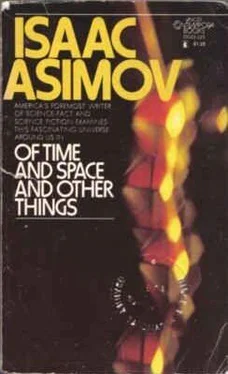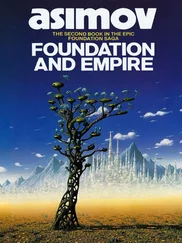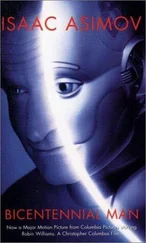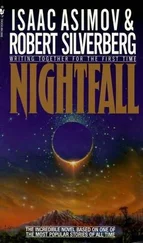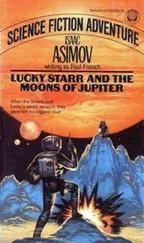Isaac Asimov - Of Time and Space and Other Things
Здесь есть возможность читать онлайн «Isaac Asimov - Of Time and Space and Other Things» весь текст электронной книги совершенно бесплатно (целиком полную версию без сокращений). В некоторых случаях можно слушать аудио, скачать через торрент в формате fb2 и присутствует краткое содержание. Год выпуска: 1972, ISBN: 1972, Издательство: Lancer Books, Жанр: Прочая научная литература, на английском языке. Описание произведения, (предисловие) а так же отзывы посетителей доступны на портале библиотеки ЛибКат.
- Название:Of Time and Space and Other Things
- Автор:
- Издательство:Lancer Books
- Жанр:
- Год:1972
- ISBN:ISBN: 0-447-33023-3
- Рейтинг книги:4 / 5. Голосов: 1
-
Избранное:Добавить в избранное
- Отзывы:
-
Ваша оценка:
- 80
- 1
- 2
- 3
- 4
- 5
Of Time and Space and Other Things: краткое содержание, описание и аннотация
Предлагаем к чтению аннотацию, описание, краткое содержание или предисловие (зависит от того, что написал сам автор книги «Of Time and Space and Other Things»). Если вы не нашли необходимую информацию о книге — напишите в комментариях, мы постараемся отыскать её.
Of Time and Space and Other Things — читать онлайн бесплатно полную книгу (весь текст) целиком
Ниже представлен текст книги, разбитый по страницам. Система сохранения места последней прочитанной страницы, позволяет с удобством читать онлайн бесплатно книгу «Of Time and Space and Other Things», без необходимости каждый раз заново искать на чём Вы остановились. Поставьте закладку, и сможете в любой момент перейти на страницу, на которой закончили чтение.
Интервал:
Закладка:
I've calculated that the Mohammedan year will catch up to the Christian year in about nineteen millennia. The year A.D. 20,874 will also be A.H. 20,874, and the Moslems will then be able to switch to our year with a minimum of trouble.
But what can we do about the lunar year in order to make it keep even with the seasons and the solar year? We can't just add II days at the end, for then the next year would not start with the new Moon and to the ancient
Babylonians, for instance, a new Moon start was essential.
However, if we start a solar year with the new Moon and wait, we will find that the twentieth solar year there after starts once again on the day of the new Moon. You see, 19 solar years contain just about 235 lunar months.
Concentrate on those 235 lunar months. That is equiva lent to 19 lunar years (made up of 12 lunar months each) plus 7 lunar months left over. We could, then, if we wanted to, let the lunar years progress as the Moham medans do, until 19 such years had passed. At this time the calendar would be exactly 7 months behind the sea sons, and by adding 7 months to the 19th year (a 19th year of 19 months-very neat) we could start a new 19 year cycle, exactly even with both the Moon and the sea sons.
The Babylonians were unwilling, however, to let them selves fall 7 months behind the seasons. Instead, they added that 7-month discrepancy through the 19-year cycle, one month at a time and as nearly evenly as possible. Each cycle had twelve 12-month years and seven 13-montb years. The "intercalary month" was added in the 3rd, 6th, 8tb, I lth, 14th, 17th, and 19th year of each cycle, so that the year was never more than about 20 days behind or ahead of the Sun.
Such a calendar, based on the lunar months, but gim micked so as to keep up with the Sun, is a "lunar-solar calendar."
The Babylonian lunar-solar calendar was popular in ancient times since it adjusted the seasons while preserving the sanctity of the Moon. The Hebrews and Greeks both adopted this calendar and, in fact, it is still the basis for the Jewish calendar today. The individual dates in the
Jewish calendar are allowed to fall slightly behind the Sun until the intercalary month is added, when they suddenly shoot slightly ahead of the Sun. That is why holidays like
Passover and Yom Kippur occur on different days of the civil calendar (kept strictly even with the Sun) each year.
These holidays occur on the same day of the year each year in the Jewish calendar.
The early Christians continued to use the Jewish calen dar for three centuries, and established the dayof Easter on that basis. As the centuries passed, matters grew some what complicated, for the Romans (who were becoming
Christian in swelling numbers) were no longer used to a lunar-solar calendar and were puzzled at the erratic jump ing about of Easter. Some formula had to be found by which the correct date for Easter could be calculated in advance, using the Roman calendar.
It was decided at the Council of Nicaea, in A.D. 325 (by which time Rome had become officially Christian), that Easter was to fall on the Sunday after the first full Moon after the vernal equinox, the date of the vernal equinox being established as March 21. However, the full Moon referred to is not the actual full Moon, but a fic titious one called the "Paschal Full Moon" ("Paschal" being derived from Pesach, which is the Hebrew word for Passover). The date of the Paschal Full Moon is calcu lated according to a formula involving Golden Numbers and Dominical Letters, which I won't go into.
The result is that Easter still jumps about the days of the civil year and can fall as early as March 22 and as late as April 25. Many other church holidays are tied to Easter and likewise move about from year to year.
Moreover, all Christians have not always agreed on the exact formula by which the date of Easter was to be cal culated. Disagreement on this detail was one of the reasons for the schism between the Catholic Church of the West and the Orthodox Church of the East. In the early Middle
Ages there was a strong Celtic Church which had its own formula.
Our own calendar is inherited from Egypt, where sea sons were unimportant. The one great event of the year was the Nile flood, and this took place (on the average) every 365 days. From a very early date, certainly as early as 2781 B.C., the Moon was abandoned and a "solar calen 19 dar," adapted to a constant-length 365-day year, was adopted.
The solar calendar kept to the tradition of 12 months, however. As the year was of constant length, the months were of constant length, too-30 days each. This meant that the new Moon could fall on any day of the month, but the Egyptians didn't care. (A month not based on the Moon is a "calendar month.")
Of course 12 months of 30 days each add up only to 360 days, so at the end of each 12-month cycle, 5 addi tional days were added and treated as holidays.
The solar year, however, is not exactly 365 days long.
There are several kinds of solar years, differing slightly in length, but the one upon which the seasons depend is the "tropical year," and this is about 3651/4 days long.
This means that each year, the Egyptian 365-day year falls 1/4 day behind the Sun. As time went on the Nile flood occurred later and later in the year, until finally it had made a complete circuit of the year. In 1460 tropical years, in other words, there would be 1461 Egyptian years.
This period of 1461 Egyptian yea'rs was called the "Sothic cycle," from Sothis, the Egyptian name for the star Sirius. If, at the beginning of one Sothic cycle, Sirius rose with the Sun on the first day of the Egyptian year, it would rise later and later during each succeeding year until finally, 1461 Egyptian years later, a new cycle would begin as Sothis rose with the Sun on New Year's Day once more.
The Greeks bad learned about that extra quarter day as early as 380 B.C., when Eudoxus of Cnidus made the discovery. In 239 B.c. Ptolemy Euergetes, the Macedonian king of Egypt, tried to adjust the Egyptian calendar to take that quarttr day into account, but the ultra-conserva tive Egyptians would have none of such a radical innova tion.
Meanwhile, the Roman Republic had a lunar-solar calendar, one in which an intercalary month was added every once in a while. The priestly officials in charge were elected politicians, however, and were by no means as con 20 scientious as those in the East. The Roman priests added a month or not according to whether they wanted a long year (when the other annually elected officials in power were of their own party) or a short one (when they were not). By 46 B.C., the Roman calendar was 80 days behind the Sun.
Julius Caesar was in power then and decided to put an end to this nonsense. He had just returned from Egypt where he had observed the convenience and simplicity of a solar year, and imported an Egyptian astronomer, Sosig enes, to help him. Together, they let 46 B.C. continue for 445 days so that it was later known as "The Year of Con fusion." However, this brought the calendar even with the Sun so that 46 B.C. was the last year of confusion.
With 45 B.C. the Romans adopted a modified Egyptian calendar in which the five extra days at the end of the year were distributed throughout the year, giving us our months of uneven length. Ideally, we should have seven 30-day months and five 31-day months. Unfortunately, the Ro mans considered February an unlucky month and short ened it, so that we ended with a silly arrangement of seven 31-day months, four 30-day months, and one 28-day month.
In order to take care of that extra 1/4 day, Caesar and Sosigenes established every fourth year with a length of 366 days. (Under the numbering of the years of the Chris tian era, every year divisible by 4 has the intercalary day - set as February 29. Since 1964 divided by 4 is 491, without a remainder, there is a February 29 in 1964.)
Читать дальшеИнтервал:
Закладка:
Похожие книги на «Of Time and Space and Other Things»
Представляем Вашему вниманию похожие книги на «Of Time and Space and Other Things» списком для выбора. Мы отобрали схожую по названию и смыслу литературу в надежде предоставить читателям больше вариантов отыскать новые, интересные, ещё непрочитанные произведения.
Обсуждение, отзывы о книге «Of Time and Space and Other Things» и просто собственные мнения читателей. Оставьте ваши комментарии, напишите, что Вы думаете о произведении, его смысле или главных героях. Укажите что конкретно понравилось, а что нет, и почему Вы так считаете.
